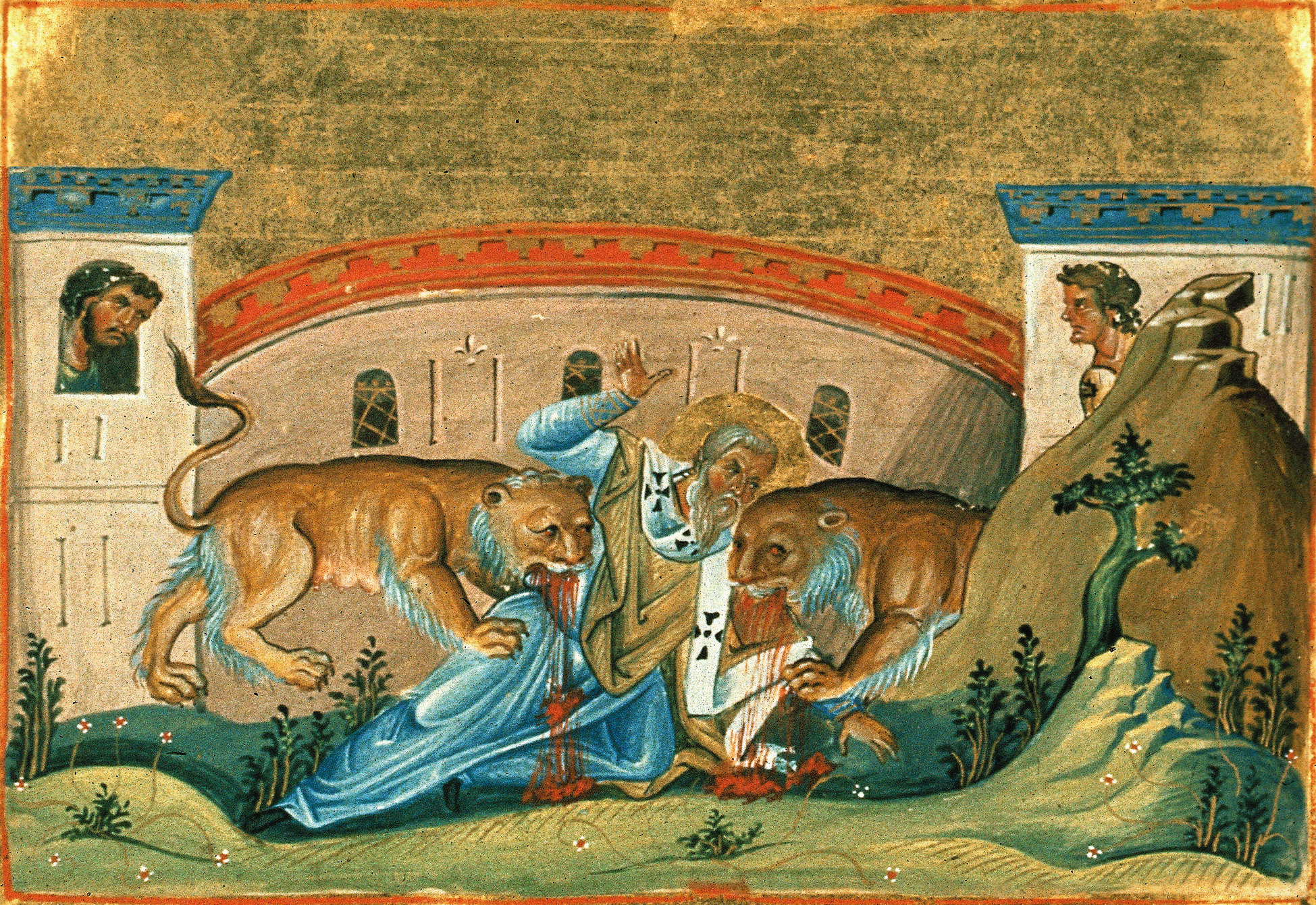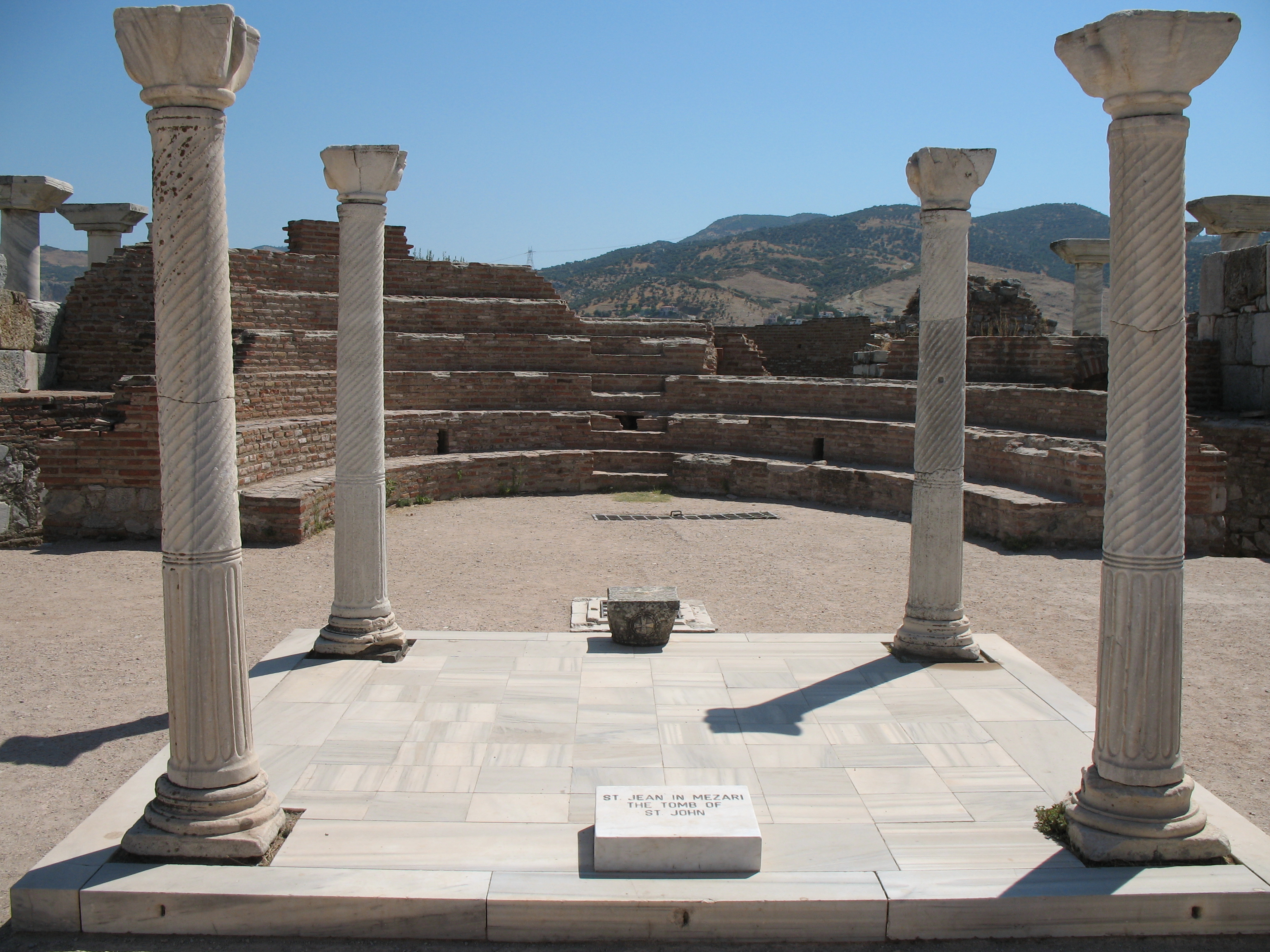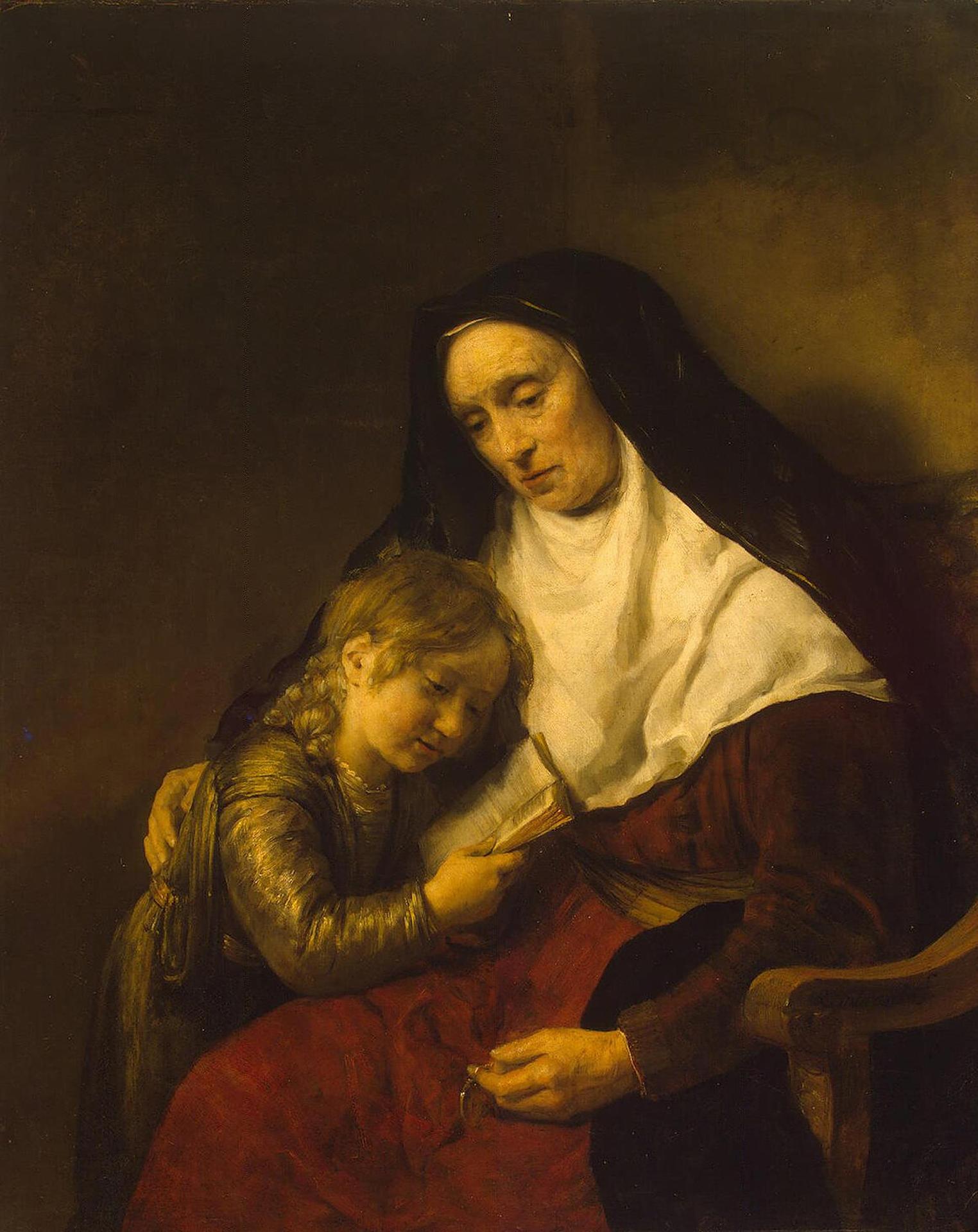|
Diocese Of Magnesia
The Diocese of Magnesia was an ancient Bishopric of Early Christianity. The seat of the bishopric was the town of Magnesia on the Maeander in western Turkey, and Hierocles ranks it among the bishoprics of the province of Asia. Later documents seem to imply that at one time it bore the name of Maeandropolis. Known bishops of Magnesia *Saint Charalambos *Damas Bishop of Magnesia at the time of Saint Ignatius * Leontius, Bishop of Magnesia, who at the Council of Chalcedon declared that from Timothy to the time of Chalcedon there had been 26 Bishops of Ephesisus * Macarius, contemporary of St. Chrysostom John Chrysostom (; gr, Ἰωάννης ὁ Χρυσόστομος; 14 September 407) was an important Early Church Father who served as archbishop of Constantinople. He is known for his preaching and public speaking, his denunciation of ab ... * Daphnus fl 431 * Leontius at the Robber-Council (449)MacErlean, A. (1910) Magnesia. In The Catholic Encyclopedia. New York: R ... [...More Info...] [...Related Items...] OR: [Wikipedia] [Google] [Baidu] |
Bishopric
In church governance, a diocese or bishopric is the ecclesiastical district under the jurisdiction of a bishop. History In the later organization of the Roman Empire, the increasingly subdivided provinces were administratively associated in a larger unit, the diocese (Latin ''dioecesis'', from the Greek term διοίκησις, meaning "administration"). Christianity was given legal status in 313 with the Edict of Milan. Churches began to organize themselves into dioceses based on the civil dioceses, not on the larger regional imperial districts. These dioceses were often smaller than the provinces. Christianity was declared the Empire's official religion by Theodosius I in 380. Constantine I in 318 gave litigants the right to have court cases transferred from the civil courts to the bishops. This situation must have hardly survived Julian, 361–363. Episcopal courts are not heard of again in the East until 398 and in the West in 408. The quality of these courts was l ... [...More Info...] [...Related Items...] OR: [Wikipedia] [Google] [Baidu] |
Ignatius Of Antioch
Ignatius of Antioch (; Greek: Ἰγνάτιος Ἀντιοχείας, ''Ignátios Antiokheías''; died c. 108/140 AD), also known as Ignatius Theophorus (, ''Ignátios ho Theophóros'', lit. "the God-bearing"), was an early Christian writer and Patriarch of Antioch. While en route to Rome, where he met his martyrdom, Ignatius wrote a series of letters. This correspondence now forms a central part of a later collection of works known to be authored by the Apostolic Fathers. He is considered to be one of the three most important of these, together with Clement of Rome and Polycarp. His letters also serve as an example of early Christian theology. Important topics they address include ecclesiology, the sacraments, and the role of bishops. Life Nothing is known of Ignatius' life apart from what may be inferred internally from his letters, except from later (sometimes spurious) traditions. It is said Ignatius converted to Christianity at a young age. Tradition identifies I ... [...More Info...] [...Related Items...] OR: [Wikipedia] [Google] [Baidu] |
Floruit
''Floruit'' (; abbreviated fl. or occasionally flor.; from Latin for "they flourished") denotes a date or period during which a person was known to have been alive or active. In English, the unabbreviated word may also be used as a noun indicating the time when someone flourished. Etymology and use la, flōruit is the third-person singular perfect active indicative of the Latin verb ', ' "to bloom, flower, or flourish", from the noun ', ', "flower". Broadly, the term is employed in reference to the peak of activity for a person or movement. More specifically, it often is used in genealogy and historical writing when a person's birth or death dates are unknown, but some other evidence exists that indicates when they were alive. For example, if there are wills attested by John Jones in 1204, and 1229, and a record of his marriage in 1197, a record concerning him might be written as "John Jones (fl. 1197–1229)". The term is often used in art history when dating the career ... [...More Info...] [...Related Items...] OR: [Wikipedia] [Google] [Baidu] |
Chrysostom
John Chrysostom (; gr, Ἰωάννης ὁ Χρυσόστομος; 14 September 407) was an important Early Church Father who served as archbishop of Constantinople. He is known for his preaching and public speaking, his denunciation of abuse of authority by both ecclesiastical and political leaders, his ''Divine Liturgy of Saint John Chrysostom'', and his ascetic sensibilities. The epithet (''Chrysostomos'', anglicized as Chrysostom) means "golden-mouthed" in Greek and denotes his celebrated eloquence. Chrysostom was among the most prolific authors in the early Christian Church, although both Origen of Alexandria and Augustine of Hippo exceeded Chrysostom. He is honoured as a saint in the Oriental Orthodox, Eastern Orthodox, Catholic, Anglican, and Lutheran churches, as well as in some others. The Eastern Orthodox, together with the Byzantine Catholics, hold him in special regard as one of the Three Holy Hierarchs (alongside Basil the Great and Gregory of Nazianzus). The ... [...More Info...] [...Related Items...] OR: [Wikipedia] [Google] [Baidu] |
Bishop Of Ephesus
The Metropolis of Ephesus ( el, Μητρόπολις Εφέσου) was an ecclesiastical territory (metropolis) of the Ecumenical Patriarchate of Constantinople in western Asia Minor, modern Turkey. Christianity was introduced already in the city of Ephesus in the 1st century AD by Paul the Apostle. The local Christian community comprised one of the seven churches of Asia mentioned at the Book of Revelation, written by John the Apostle. The metropolis remained active until 1922-1923. History Early Christianity There had been a Jewish community at Ephesus for over three hundred years when Paul the Apostle visited Ephesus around 53 AD. Paul set out on his third missionary journey in 54 AD. He spent three months teaching in a synagogue in an effort to bring the Jews to accept union with the gentiles in Christianity, but without success. For the next two years he stayed in Ephesus seeking to convert Hellenized Jews and gentiles, and appears to have made many converts. The A ... [...More Info...] [...Related Items...] OR: [Wikipedia] [Google] [Baidu] |
Saint Timothy
Timothy or Timothy of Ephesus (Greek language, Greek: ; ''Timótheos'', meaning "honouring God" or "honoured by God") was an early Christian Evangelism, evangelist and the first Christianity, Christian bishop of Ephesus, who tradition relates died around the year AD 97. Timothy was from the Lycaonian city of Lystra or of DerbeAlbert Barnes (theologian): ''"Timothy was a native of either Derbe or Lystra, cities near to each other"'/ref>''"Paul came also to Derbe and to Lystra. A disciple was there, named Timothy, the son of a Jewish woman who was a believer, but his father was a Greek. He was well spoken of by the brothers at Lystra and Iconium."'' Acts 16:1 in Asia Minor, born of a Jews, Jewish mother who had become a Christian believer, and a Greeks, Greek father. The Paul the Apostle, Apostle Paul met him during his Missionary journeys of Paul, second missionary journey and he became Paul's companion and missionary partner along with Silas. The New Testament indicates that Timot ... [...More Info...] [...Related Items...] OR: [Wikipedia] [Google] [Baidu] |
Council Of Chalcedon
The Council of Chalcedon (; la, Concilium Chalcedonense), ''Synodos tēs Chalkēdonos'' was the fourth ecumenical council of the Christian Church. It was convoked by the Roman emperor Marcian. The council convened in the city of Chalcedon, Bithynia (modern-day Kadıköy, Istanbul, Turkey) from 8 October to 1 November 451 AD. The council was attended by over 520 bishops or their representatives, making it the largest and best-documented of the first seven ecumenical councils. The principal purpose of the council was to re-assert the teachings of the ecumenical Council of Ephesus against the heresies of Eutyches and Nestorius. Such heresies attempted to dismantle and separate Christ's divine nature from his humanity (Nestorianism) and further, to limit Christ as solely divine in nature (Monophysitism). Extended summary As recorded by American Christian scholar Jaroslav Pelikan, it was stated: Whilst this judgment marked a significant turning point in the Christological ... [...More Info...] [...Related Items...] OR: [Wikipedia] [Google] [Baidu] |
Leontius, Bishop Of Magnesia
The Diocese of Magnesia was an ancient Bishopric of Early Christianity. The seat of the bishopric was the town of Magnesia on the Maeander in western Turkey, and Hierocles ranks it among the bishoprics of the province of Asia. Later documents seem to imply that at one time it bore the name of Maeandropolis. Known bishops of Magnesia *Saint Charalambos *Damas Bishop of Magnesia at the time of Saint Ignatius * Leontius, Bishop of Magnesia, who at the Council of Chalcedon declared that from Timothy to the time of Chalcedon there had been 26 Bishops of Ephesisus * Macarius, contemporary of St. Chrysostom John Chrysostom (; gr, Ἰωάννης ὁ Χρυσόστομος; 14 September 407) was an important Early Church Father who served as archbishop of Constantinople. He is known for his preaching and public speaking, his denunciation of ab ... * Daphnus fl 431 * Leontius at the Robber-Council (449)MacErlean, A. (1910) Magnesia. In The Catholic Encyclopedia. New York: R ... [...More Info...] [...Related Items...] OR: [Wikipedia] [Google] [Baidu] |
Cambridge University Press
Cambridge University Press is the university press of the University of Cambridge. Granted letters patent by Henry VIII of England, King Henry VIII in 1534, it is the oldest university press A university press is an academic publishing house specializing in monographs and scholarly journals. Most are nonprofit organizations and an integral component of a large research university. They publish work that has been reviewed by schola ... in the world. It is also the King's Printer. Cambridge University Press is a department of the University of Cambridge and is both an academic and educational publisher. It became part of Cambridge University Press & Assessment, following a merger with Cambridge Assessment in 2021. With a global sales presence, publishing hubs, and offices in more than 40 Country, countries, it publishes over 50,000 titles by authors from over 100 countries. Its publishing includes more than 380 academic journals, monographs, reference works, school and uni ... [...More Info...] [...Related Items...] OR: [Wikipedia] [Google] [Baidu] |
Damas Bishop Of Magnesia
Damas was Bishop of the church in Magnesia in August 117. He is reputed to have gone out to meet Ignatius of Antioch as he was escorted by Roman Soldiers along the road to Smyrna. Irenius entrusted to him a letter to his church. That letter has gone on to become a statement of Christian doctrine. In that letter Ignatius of Antioch Ignatius of Antioch (; Greek: Ἰγνάτιος Ἀντιοχείας, ''Ignátios Antiokheías''; died c. 108/140 AD), also known as Ignatius Theophorus (, ''Ignátios ho Theophóros'', lit. "the God-bearing"), was an early Christian writer ... exhorts The church in Magnesia to not treat him "''too familiarly on account of his youth, but to yield all reverence to him''" ''and it becometh you also not to presume upon the youth of your bishop, but according to the power of God the Father to render unto him all reverence, even as I have learned that the holy presbyters also have not taken advantage of his outwardly youthful estate, but give pla ... [...More Info...] [...Related Items...] OR: [Wikipedia] [Google] [Baidu] |
Early Christian
Early Christianity (up to the First Council of Nicaea in 325) spread from the Levant, across the Roman Empire, and beyond. Originally, this progression was closely connected to already established Jewish centers in the Holy Land and the Jewish diaspora. The first followers of Christianity were Jews or proselytes, commonly referred to as Jewish Christians and God-fearers. The Apostolic sees claim to have been founded by one or more of the apostles of Jesus, who are said to have dispersed from Jerusalem sometime after the crucifixion of Jesus, c. 26–36, perhaps following the Great Commission. Early Christians gathered in small private homes, known as house churches, but a city's whole Christian community would also be called a church – the Greek noun ἐκκλησία (''ekklesia'') literally means assembly, gathering, or congregation but is translated as church in most English translations of the New Testament. Many early Christians were merchants and others who had pract ... [...More Info...] [...Related Items...] OR: [Wikipedia] [Google] [Baidu] |
Saint Charalambos
Saint Charalampos ( grc, Ἅγιος Χαράλαμπος) (also variously Charalampas, Charalampus, Charalambos, Haralampus, Haralampos, Haralabos or Haralambos) was an early Christian priest in Magnesia on the Maeander, a city in Asia Minor, in the diocese of the same name. His name means ''glowing with joy'' in Greek. He lived during the reign of Septimius Severus (193–211), when Lucian was Proconsul of Magnesia. According to one source, at the time of his martyrdom in 202, Charalambos was 113 years old. Life and martyrdom Charalambos was Bishop of Magnesia also known as the Assyrian Saint Mar Zayya and spread the Gospel in that region for many years. However, when news of his preaching reached the authorities of the area, the proconsul Lucian and military commander Lucius, the saint was arrested and brought to trial, where he confessed his faith in Christ and refused to offer sacrifice to idols. Despite his advanced age, he was tortured mercilessly. They lacerated his bod ... [...More Info...] [...Related Items...] OR: [Wikipedia] [Google] [Baidu] |





